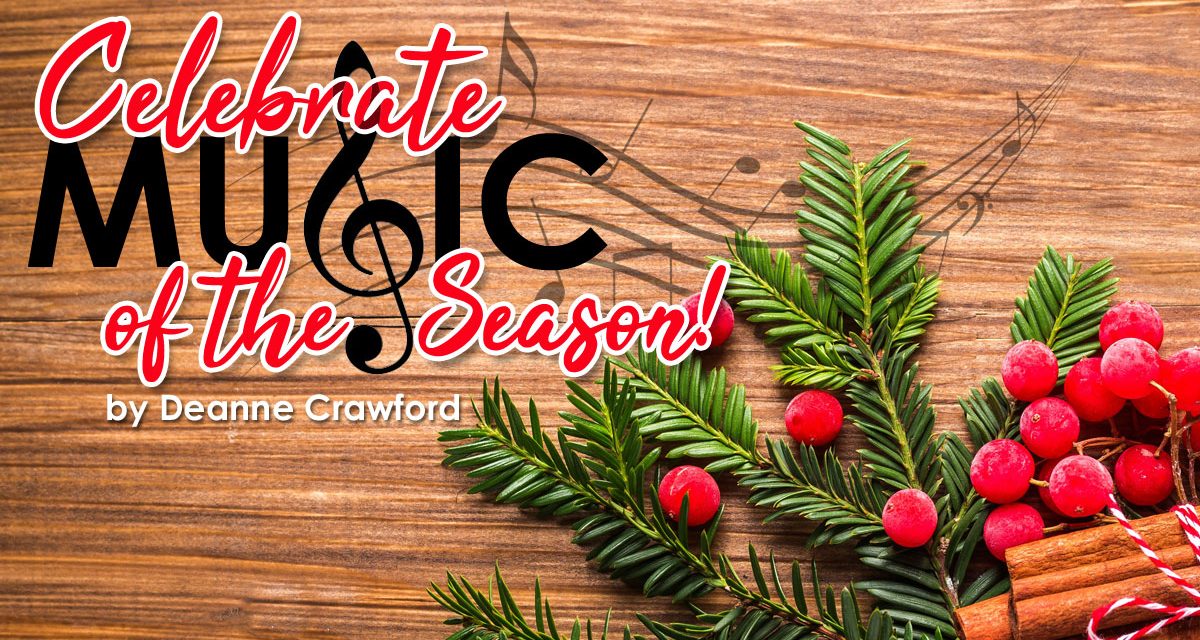Joyful holidays are created through making memories with our children. I cherish the time (and memories!) from the unit studies my family experienced. It is my hope that your family will be blessed learning together this Christmas season. You will notice underlined words (hyperlinks) in our study which link to family friendly videos and websites to enhance the learning journey. Without further ado, let’s get started!
Based on a traditional German folk song from the 16th century, O’ Tannenbaum, has quickly become a Christmas favorite regardless of your language. Kick off our unit study by listening to this festive song in German and English. In German, Tannenbaum actually refers to a fir tree although English has translated the word as Christmas tree. Interestingly, the origin of the song was to celebrate the everlasting beauty and strength of the fir tree and not the celebration of Christmas. Throughout the world, fir trees are only one type of evergreen used as a Christmas tree. Whether your preference is fir, pine or spruce, the beauty brings delight to children and adults. If you decorate a live tree, identify it at Real Christmas Tree. (If your family chooses an artificial tree you can easily find the living tree style of your tree as well.)
Introduce your children to folk music. Simply defined, folk music is defined as songs or music based on cultural traditions and is often performed by regular people and not musicians. Folk music is unknowingly woven into our culture. Ask your children if they are familiar with the following: I’ve been Working on the Railroad, Home on the Range, and The More we get Together, which are well-known folk songs. Interestingly, American folk songs are rooted in the struggle and the hope of a growing nation. Check out Wonderopolis to learn more and listen to contemporary American folk music.
In Germany, volksmusik means the people’s music or more commonly, folk music. Using Google Translate™, listen to the German pronunciation of volksmusik. The earliest version of O’ Tannenbaum, was written by Melchior Franck, a German composer at the beginning of the Baroque era. A Lutheran by faith, he sought to bring the Catholic motet to his protestant worship. Revisions to the lyrics were made in 1819 by Joachim August Zarnack, which added a verse upholding faithful love. In 1824, Leipzig organist Ernst Anschütz penned the final verses that became the carol we now sing throughout the Christmas season.
This is a perfect time to learn more about Germany and introduce the German language to your family! On YouTube™, Discovering Europe: Interesting Facts about Germany for Kids and 10 Facts about Germany teach unique traits of this historic country. Older children can learn more about the importance of unity and Germany’s geographic challenge here. You may be surprised to learn that Deutsch (German) is the official language of Germany, Austria, and Liechtenstein, and is a co-official language in Switzerland, Belgium, Luxembourg, and the European Union. Several other countries, including Denmark, Hungary, Italy, and Poland have German as a national minority language.
As a language, Deutsch sounds a bit raspier and throaty compared to others. It is oftentimes described as loud or harsh. This is a misconception based on German sounds being made in the back of the vocal tract, by constricting the tongue against the back wall of the throat. Watch this video on the Visual Guide to German pronunciation: R to appreciate one consonant of the German language. Learn 15 German words for beginners and gain a deeper understanding of the German language here.
As we come to the end of our unit study on O’ Tannenbaum (or O’ Christmas Tree), let’s spend our last few minutes learning about the history of the Christmas tree tradition. Would you be surprised to learn that 16th century German Christians are believed to be the first people who brought decorated trees into their homes? In fact, it is a widely held belief that Martin Luther, the protestant reformer, was the first to add lighted candles to a tree as a response to the awe he felt observing the stars twinkling on evergreen trees. It was not until the 1840s when Queen Victoria and Prince Albert decorated a tree for a family sketching and, thus, propelled the decorated tree we enjoy today. As we entered the 20th century, Christmas trees became widespread in homes across the United States, flourishing when electricity became widely available in homes across the land. Learn more about the history of Christmas trees including a look at Christmas trees across the world here.
Thank you for joining me in celebrating the music of this season. If this has been a blessing to your family, be sure to check out our other Christmas themed unit studies: I Heard the Bells on Christmas Day, and the Little Drummer Boy. If you would like to share your family memories this Christmas, be sure to reach out. I would love to hear from you–click to email me!
Wishing you and your family a joyous Christmas season,
~Deanne and the Rainbow family





